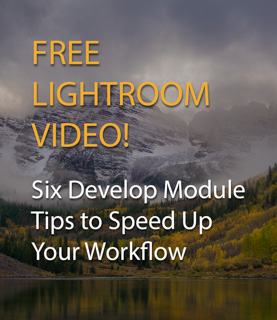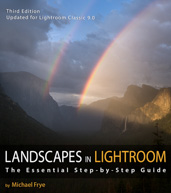by Michael Frye | Dec 22, 2019 | Light and Weather
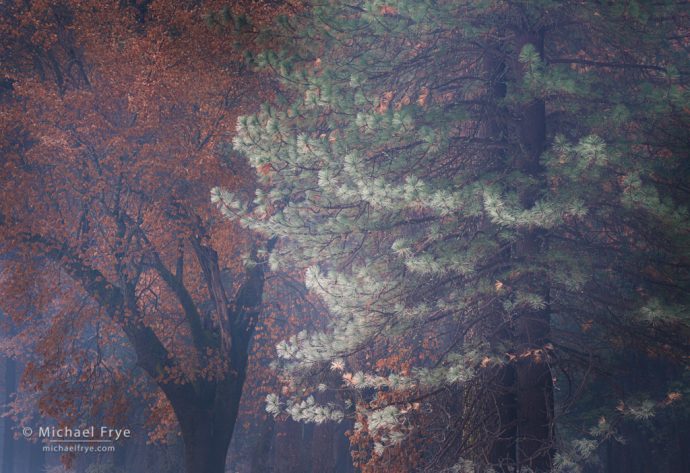
Oak and frost-tipped ponderosa pine, Yosemite. We walked to a spot along the Merced River, then decided to check out a nearby meadow, where we found some mist, and even better, beautifully-frosted trees. This juxtaposition of a frost-tipped pine and oak caught my eye. 163mm, 1/3 sec. at f/16, ISO 100.
It’s easy to view landscapes as permanent and unchanging, since the major components, like mountains rivers, lakes, etc., change slowly, at a pace measured in thousands of years – too slowly for us short-lived animals to perceive directly. The geologic evidence tells us that the land has changed – dramatically – and will continue to change, but I think for most people that’s an intellectual understanding, and doesn’t really affect the way we perceive and experience the world around us.
(more…)
by Michael Frye | Dec 15, 2019 | Light and Weather
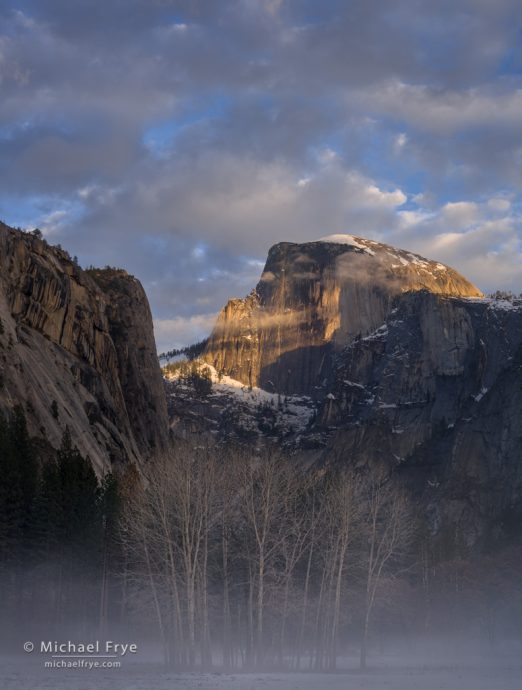
Half Dome, winter sunset, Yosemite. Incoming clouds prompted me to head to this spot to photograph Half Dome; luckily the sun broke through a gap in the clouds at the right moment. 50mm, 1/45th sec. at f/11, ISO 100.
Our exceptionally dry autumn gave way to a series of storms recently, with lots of interesting photography weather.
During our recent workshop every day seemed to bring a new opportunity. The first day it was a clearing storm. The next day it was ice patterns with gold reflections. We photographed the moon rising next to Half Dome – twice – plus misty meadows, backlit oaks, and frosted pines. It was a lot of fun.
(more…)
by Michael Frye | Nov 17, 2019 | Vision and Creativity
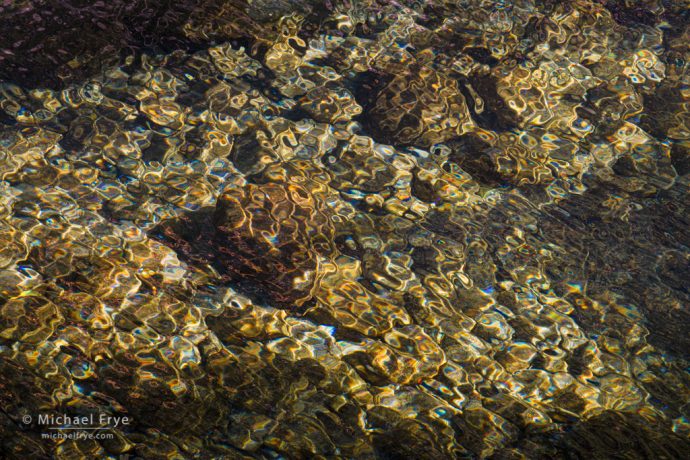
Rocks and ripples in the Merced River, Yosemite. Claudia, Charlotte Gibb, and I noticed some interesting patterns in the water while wandering along the river last year. I made a few compositions at one spot, then moved downstream, where I found Claudia and Charlotte looking at similar patterns with prism effects – little squiggly rainbows flashing across the water. I made a couple of photographs I liked last year, but then went back to that same spot last month, and this time found a sunlit patch of water surrounded by tree shadows, which gave the pattern a natural vignette. I needed a fast shutter speed to freeze the motion of the ripples, and a small aperture to keep everything in focus, so I raised the ISO to 1600 to get the shutter speed up to 1/125th sec. at f/16. The focal length was 200mm.
Landscape photographers usually hope for great conditions: a clearing storm, sun breaking through fog, a spectacular sunset, great fall color, dense patches of wildflowers, and so on.
I wouldn’t say it’s easy to make good photographs under such conditions. You still have to put yourself in the right place at the right time, find a good composition, and get the exposure and focus right. And all of those things take skill. But it’s certainly easier. In those highly-photogenic situations you just have to capture the gift that nature is giving you.
(more…)
by Michael Frye | Nov 10, 2019 | Light and Weather, Vision and Creativity
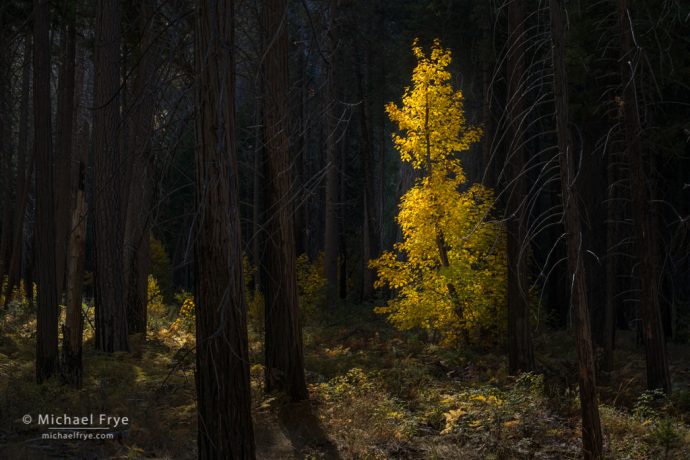
Big-leaf maple in a burned forest, Yosemite
I’m always striving to make photographs that convey a mood. I want to do more than show what a place looks like; I want to capture what it feels like to be there at that particular moment.
It seems easier to convey a mood when photographing big landscape scenes during interesting weather. Just describing any kind of weather suggests a mood: sunny, cloudy, gray, overcast, rainy, foggy, misty, snowy, windy, calm – and so on. Combining weather with a compelling landscape almost automatically creates a mood.
(more…)
by Michael Frye | Nov 3, 2019 | Composition
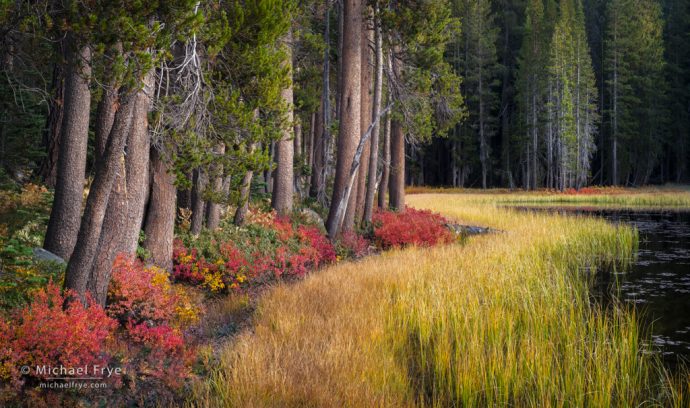
Autumn lakeshore, Yosemite. 50mm, 1/2 sec. at f/16, ISO 100, polarizer.
I sometimes get asked to recommend a book about composition, and my first suggestion is always Ian Plant’s ebook Visual Flow. Ian understands composition well, presents his concepts clearly, and doesn’t have much use for rules.
The title of the book suggests an important concept, but one that’s often overlooked. I think the best landscape compositions have a natural visual flow. Your eye doesn’t get stuck, but travels freely through the frame, pausing briefly at the key areas.
(more…)






